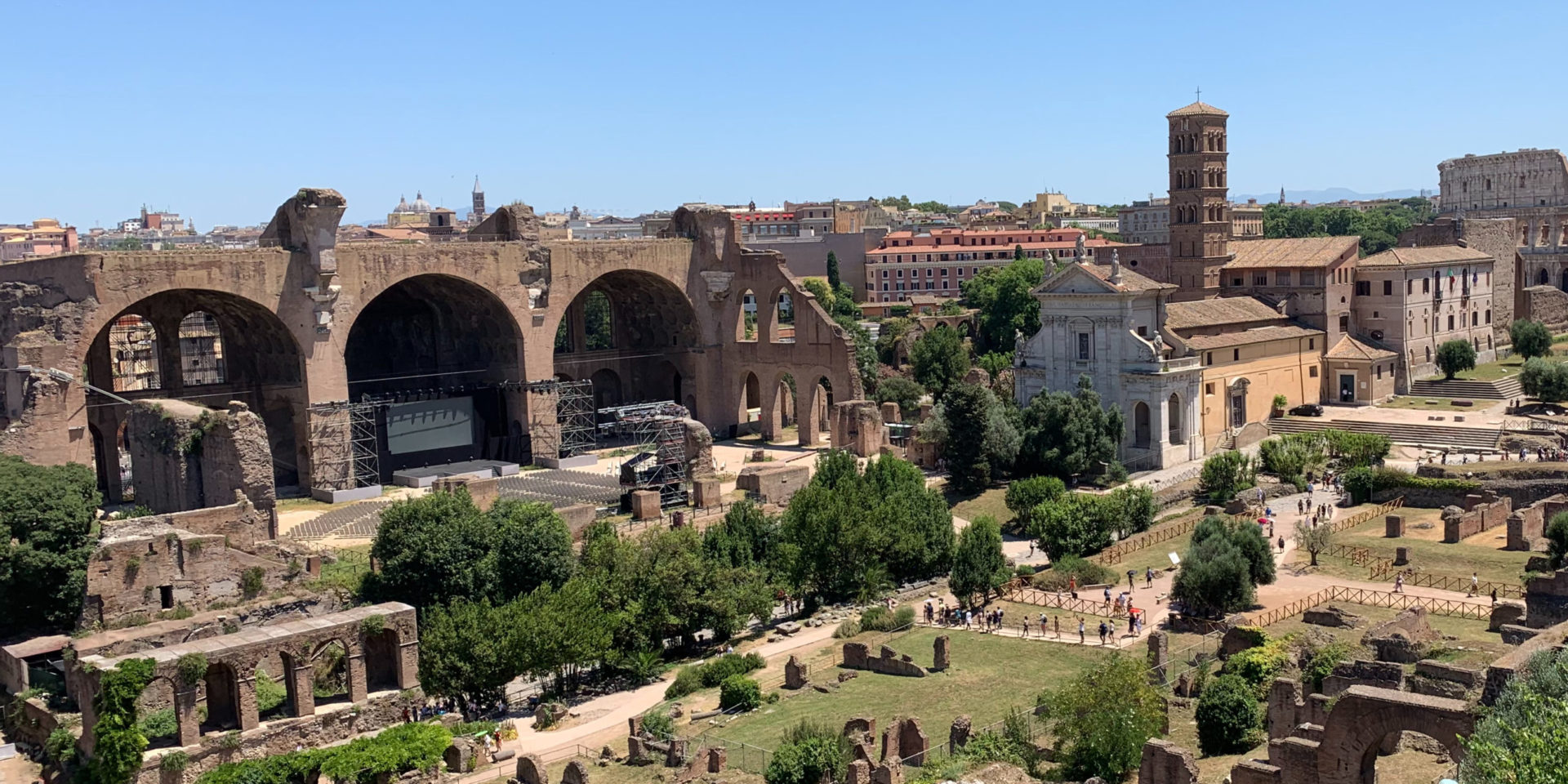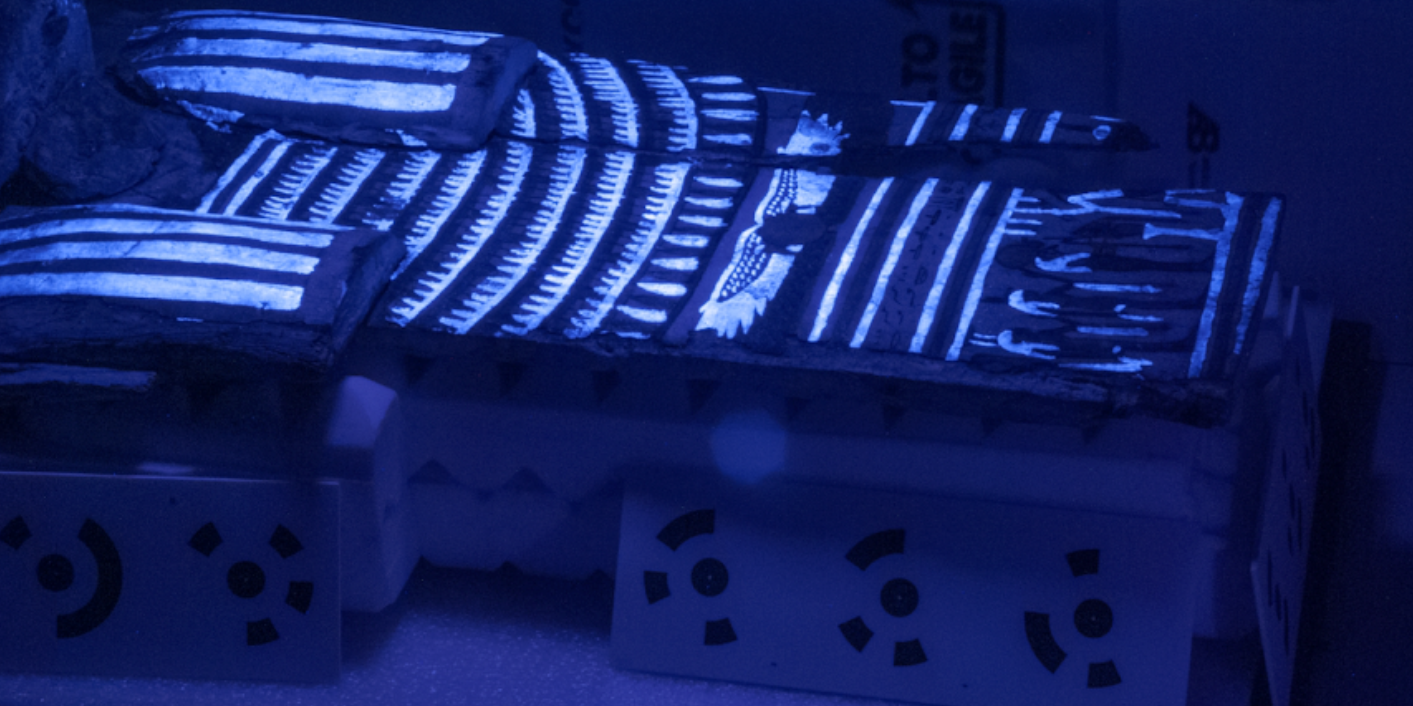ONE-MA3 – Day XV: All Roads Lead to Rome…

By Sophia Mittman ’22
In the past few days we have learned about some of the major networks that Romans constructed such as roads (like the Via Appia) and aqueducts (like the Anio Novus), and indeed back in the Roman Empire, most of these did lead to Rome! Today we had a full free day to spend in Rome exploring the ancient city to our hearts’ desire. I will say, visiting all of the tourist hotspots would have been exciting on its own, but after two weeks with ONE-MA3, we can now see past the facades of degraded structures and restored art as if we were archeological detectives, which in my opinion made the entire experience of exploring the older parts of Rome even more captivating and invigorating.
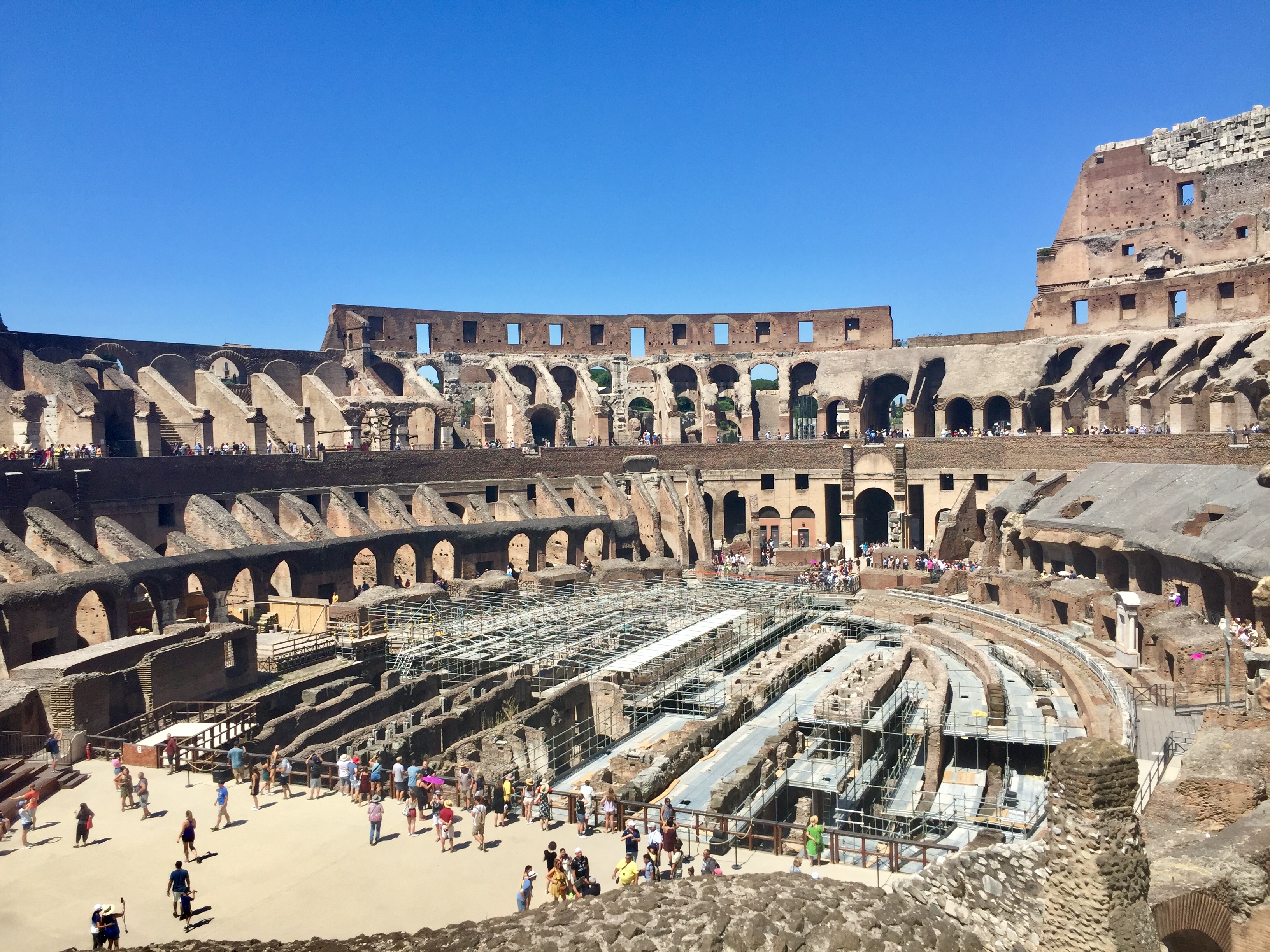
The Colosseum!
Our first stop was at one of the most famous attractions of all—and according to Wikipedia, the most visited in the world—the Colosseum. At a first glance, it looks exactly the same as it does in every history textbook, postcard, or travel brochure that you’ve seen. But, upon a closer examination of the ancient structure, we started pointing out interesting features to each other that we wouldn’t have noticed before. For example, one of us realized that each level of the outermost wall of the stadium (consisting of four levels) was decorated with a different style of column, starting with the most basic at the lowest level (simple Doric columns), and increasing in complexity and fanciness as the levels increased (to Ionic columns, then Corinthian columns, and finally Corinthian pilasters). These pieces of classical architecture came from the knowledge that we picked up in Terracina and Pompeii. Inside the Colosseum where 50,000 people could sit, we also spontaneously began identifying the chronological order of the layers of construction/restoration when it came to looking at the surfaces of the brick walls and buttresses that lined the inside of the amphitheater, just like when we identified layers of construction at the Anio Novus aqueduct earlier in the week. Before this program, I would have walked right past the old brick walls and would have thought nothing of them. Now, I am ecstatic that other students and I can stand in front of an ancient brick wall and have an entire conversation deciphering the historical clues that it gives about its past.
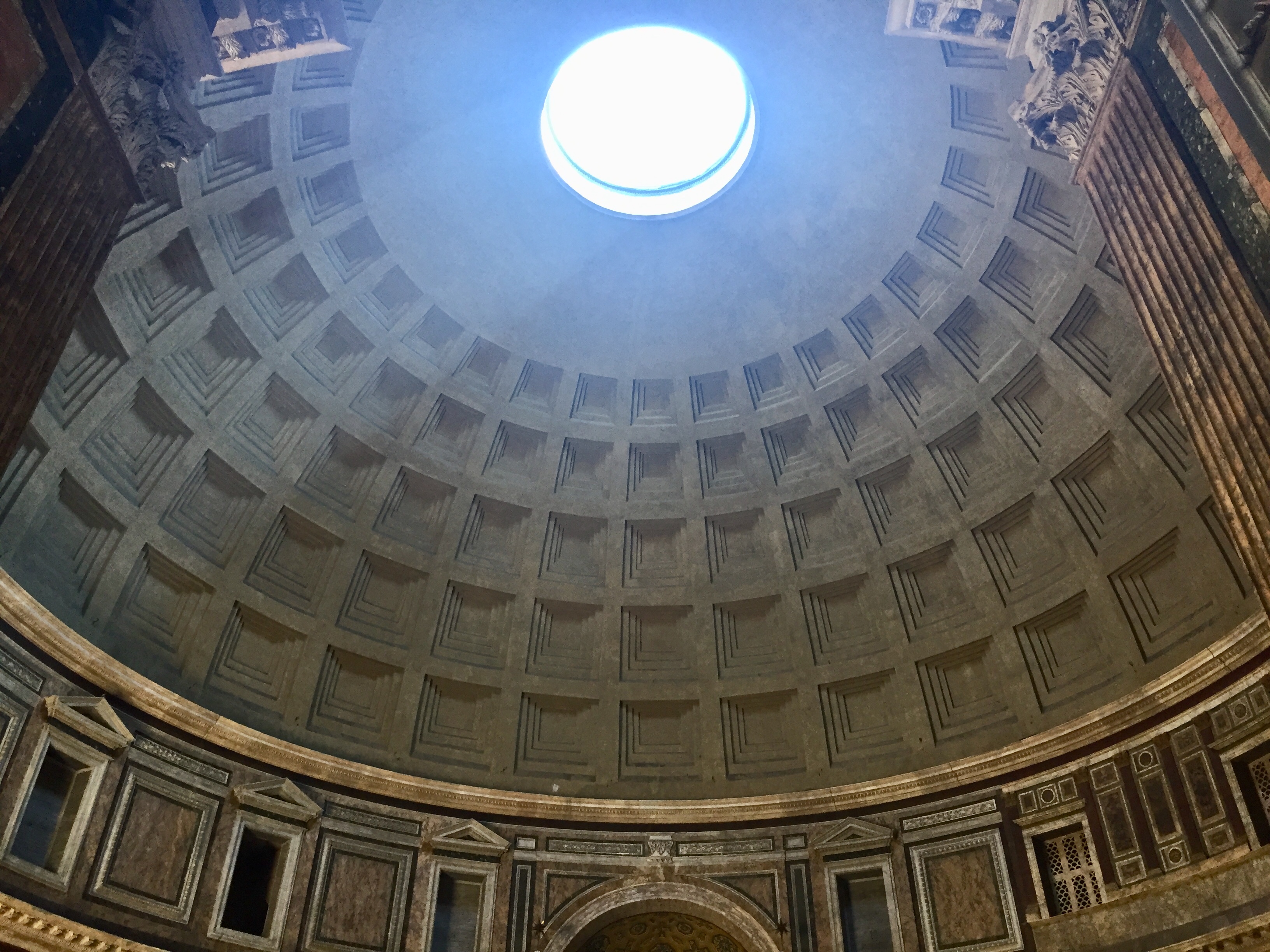
Inside the Pantheon!
Of course the Colosseum was amazing, but I was even more surprised when we walked through the neighboring ancient ruins of the Roman Forum and Palatine Hill, where we were able to see the entirety of what would have been “downtown Rome” about two thousand years ago. We could see the Colosseum in the distance, but we could also see the ruins of lots of small buildings, temples, incredible Corinthian columns that stand precariously on pedestals, and giant arches throughout the forum. Trajan’s Column was just a little further past the column: it is a giant column (pictures make it look small…in real life it’s huge!) that is decorated with a continuous spiraling narrative of scenes from battles during the time of Trajan. We then meandered a little father until we came upon the jewel of Rome and a building that is very close to many of our MIT hearts: the Pantheon. We already know about the Pantheon’s physical influence on the Big Dome that stands prominent over Killian Court, but we also had learned more about the incredible physical structure of the Pantheon in the lecture given by MIT professor John Ochsendorf when we visited the American Academy in Rome. The outside of the building was breathtaking, but the inside was even more mind-blowing and beautiful. We fawned over the marble floors and walls, wondered about mysterious rectangular spaces in the wall high up on the walls, and gaped at the sheer span and architecture of the dome. Some of us hope to take this incredible building (not literally) and use it as the focus of our cultural heritage projects in the fall.
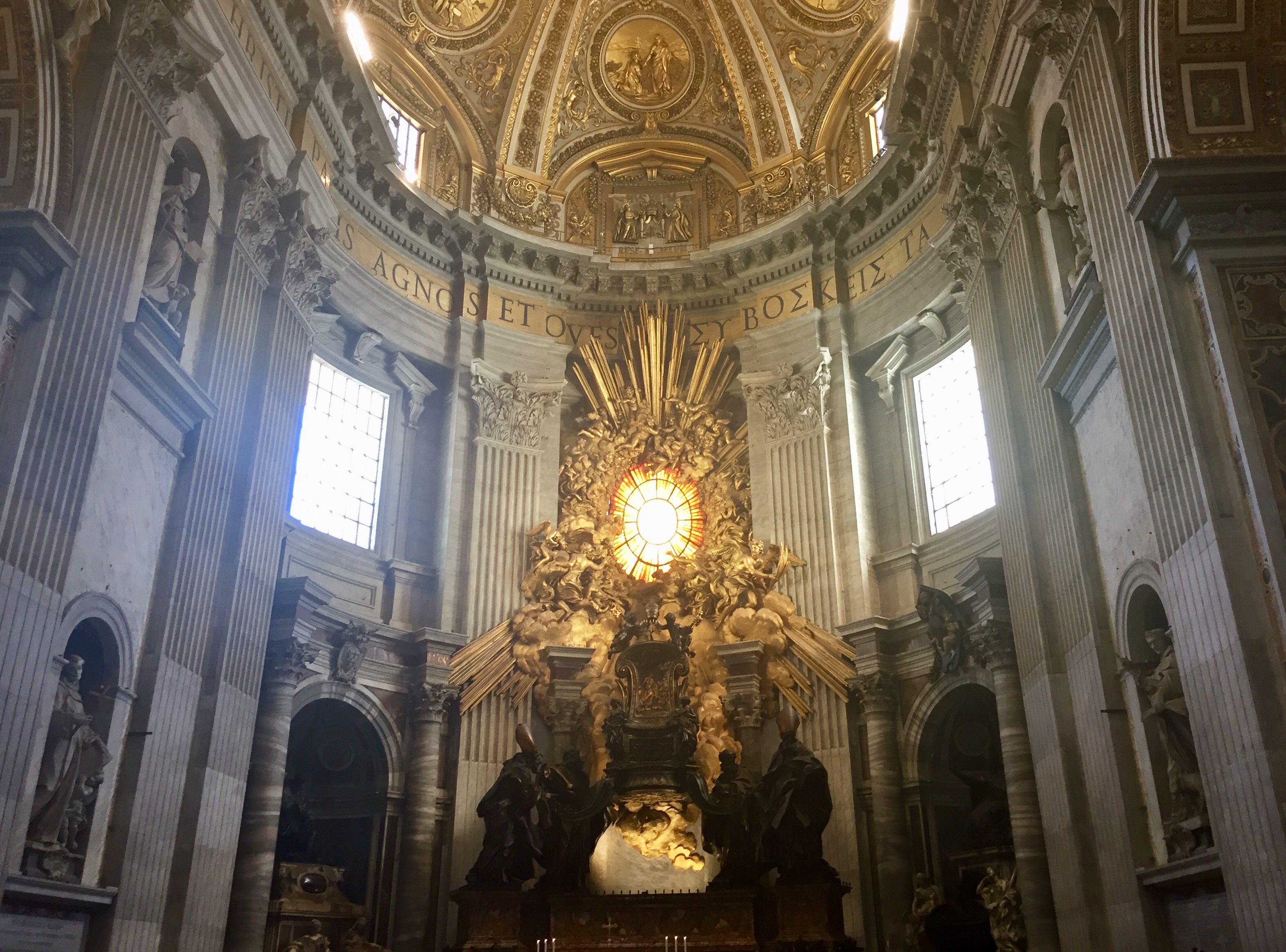
Inside St. Peter’s Basilica!
After the Pantheon, we split up into our different ways to go on more adventures. As for me, I went with my friend Carene Umubyeyi to St. Peter’s Basilica, where we had seen the facade before but had not actually had the chance to walk inside. Both of us being Catholic, it was by far the highlight of our day. As with the Sistine Chapel, my own words cannot describe the utter glory that’s inside of that basilica. As Carene put it when we first walked inside, “this [St. Peter’s basilica] is what Heaven must look like.” We wandered around with our mouths open for a while, and when I turned a corner to see Michelangelo’s Pieta resting on an altar, my breath was completely taken away. We admired the sculpture for maybe fifteen minutes before continuing on to explore the rest of the massive church. Again, like the Sistine Chapel, the amount of frescoes that lined the walls, ceilings, and domes reminded us of the huge and tiresome effort that we put into creating small 8”x8” frescoes on our own earlier in the program. We also went to Sunday Mass at the main altar, where the main stained-glass window glowed brilliantly in Renaissance glory from the sunset behind the church, and where the organ’s songs showed just how masterful the architecture of the basilica is with its incredible acoustics. As for the choir, imagine an Italian opera singer. Now imagine twenty of them singing together. That was what it was like. Overall, for me, there could not have been a better way to complete our day of immersion into Italian culture, religion, history, and art.

The Trevi Fountain (another small hotspot we visited after St. Peter’s)
Share on Bluesky

